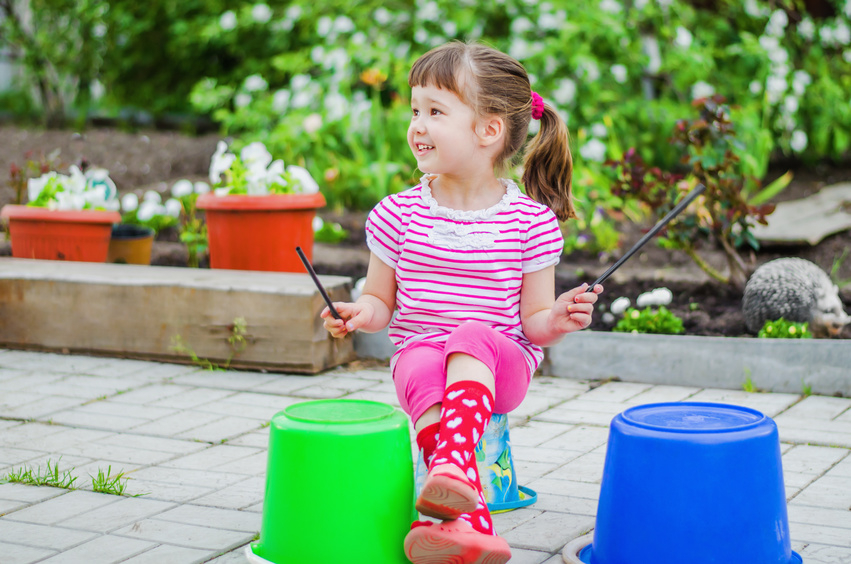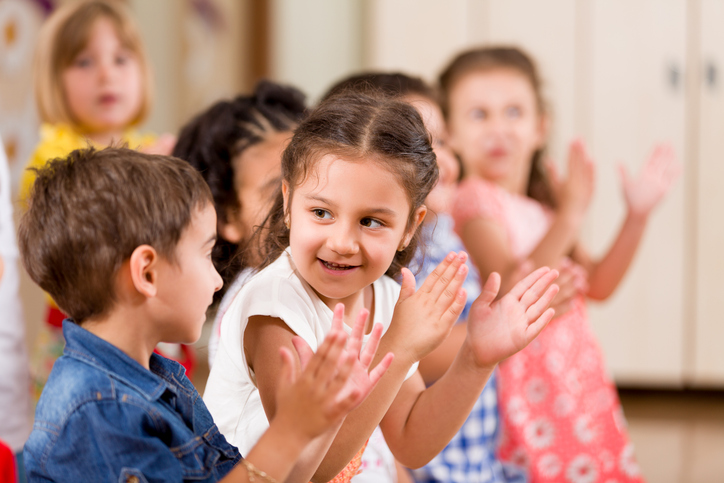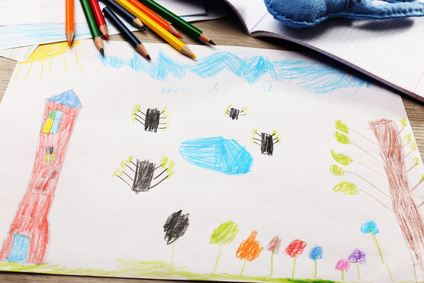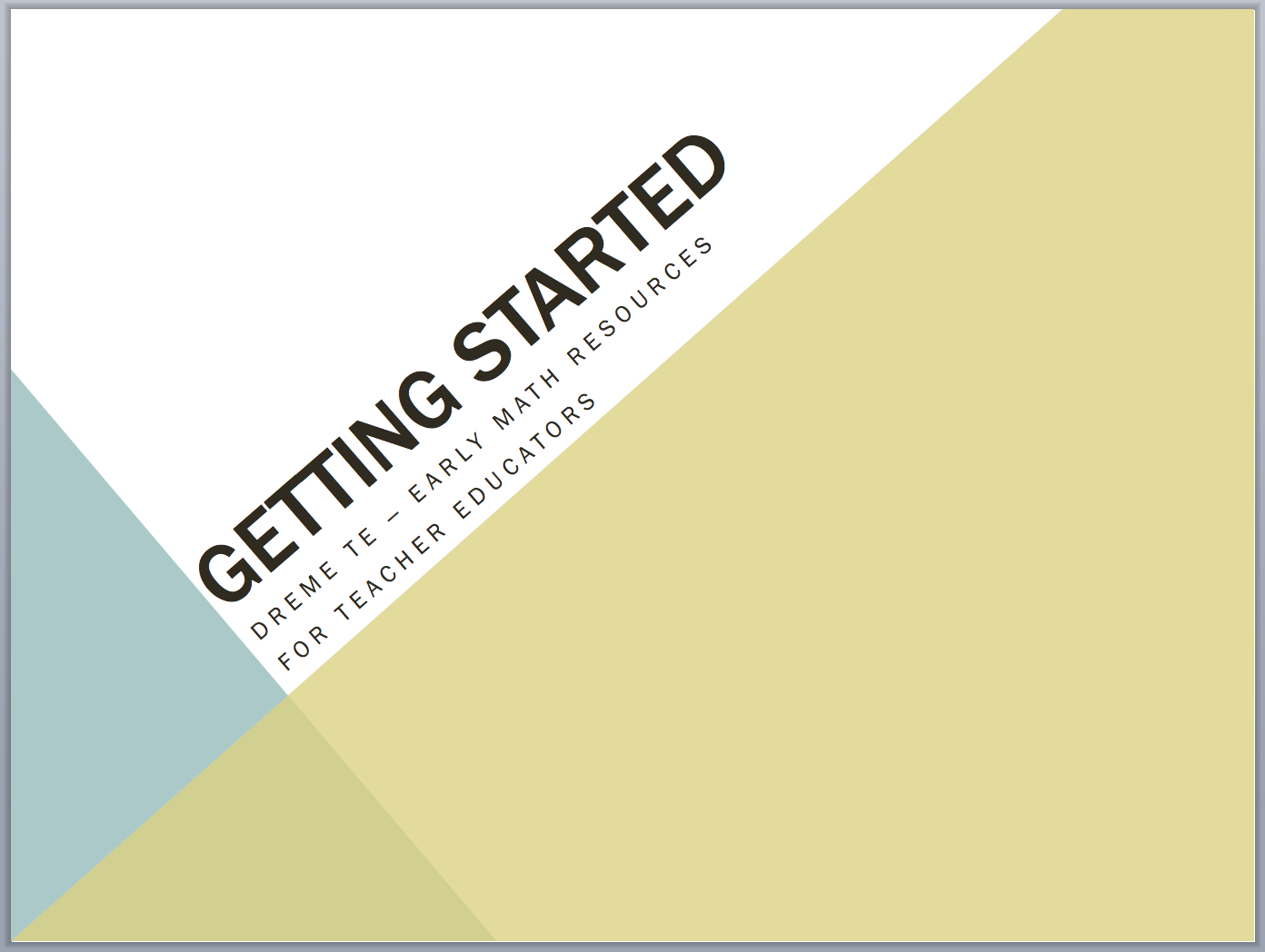Patterns are at the heart of mathematics. This article explains the basic math underlying the patterns that children encounter in their everyday lives and in preschool. Teachers need to understand these basic math concepts in order to help children build on their intuitive knowledge of them. One key concept is the generalization of patterns: the ability to apply a pattern (e.g., ABAB) to multiple materials and contexts. Other concepts covered include copying, extending, and creating patterns.
Where is the mathematics in patterns and algebra?
Mathematics has sometimes been called a science of patterns (Resnik, 1981). We think of mathematics as having structure, and that structure enables us to solve problems. The structure is built around looking for and manipulating patterns. For instance, in the real world, we use mathematics to describe actions. The red car can go 20 mph and the blue car can go 40 mph. The ratio of the top speed of these two cars is constant, creating a pattern: If they are going in the same direction in parallel, the blue car will always get to its destination twice as fast as the red. Put simply, 2RED = BLUE. If they are traveling at top speed, no matter where the cars are, that ratio can be used in an equation (with some other numbers) to figure out how far apart they’ll be at any one time. We could also use the speed of orbiting planets to figure out where they will be at a particular time. (In reality, planets slow down and speed up in response to the pull of gravity, which is influenced by their distance from other large bodies in space, but even that variation follows a pattern!)
These are exciting patterns, but let’s get back the mathematics of patterns and algebra in the preschool classroom. The following section describes ways to think about patterns and pattern activities: recognition, replication, extension, creation, and across all of these, generalization of patterns.
Patterns
Patterns are regularities that we can perceive. We can perceive patterns auditorily (two fast drum beats followed by one slow one; a bird’s call; or our heartbeat), visually (fire truck warning lights, stripes in a sidewalk crossing), somatically, through tactile or action-based sensations (tapping one’s foot to music, playing those drumbeats mentioned earlier), or as three-dimensional objects (one green block–one red block–two blue blocks–one green block–one red block–two blue blocks; daffodil–daisy–daffodil–daisy). To discern patterns, we must identify the pattern unit (in the block example: “green–red–blue–blue”). We need to understand not just the individual elements within this pattern unit, but also how the pattern unit is repeated. If you see only AB, you don’t have enough evidence to identify the pattern. But if you see the AB unit repeating, as in ABABAB, then you can be confident of your judgment.
All of these examples are of repeating patterns. Our world is also full of growing patterns. Additive patterns add the same amount each time the pattern is extended (stairs are additive patterns because each step is one unit higher than the previous one). Multiplicative patterns use scaling (ratios) each time the pattern is extended, such as in the pattern of total chairs needed for your classroom tables (one table needs six chairs, two tables need 12 chairs, three tables need 18 chairs).
Generalization of patterns
Patterns are sort of like numbers in that the quantity of “two” doesn’t specify what there are two of, and a pattern doesn’t specify what objects, sounds, actions, etc. the pattern is made of. In other words, a pattern described as ABAB can look like clap–stomp–clap–stomp or red bead–blue bead–red bead–blue bead. Another way of putting it is to say that these different manifestations of patterns (sounds or letters or clapping) are equivalent to each other. (Learning to think about patterns in this way may require a lot of experience working with patterns in many different manifestations.)
Pattern is considered an early building block in algebra. The ability to generalize patterns contributes to children’s later understanding of algebraic equations. For example, adding one more object to a group [N] will always result in N + 1 regardless of whether it is a group of bears, dinosaurs, stairs, or pennies (see Pattern Paths to Algebra). In the real world, this equation can apply to sets of anything, making the ability to generalize with patterns very useful in understanding the utility (and mathematics) of algebra.
Pattern recognition
 Pattern recognition begins with the ability to perceive patterns in the world (Look, my stripes are the same as yours!). Initially, children may not be able to precisely label or describe patterns, but as they gain more language skills, they become able discern and label them (Pointing to the series of windows in the classroom: Teacher, I see it! Little square, big square, little square, big square!).
Pattern recognition begins with the ability to perceive patterns in the world (Look, my stripes are the same as yours!). Initially, children may not be able to precisely label or describe patterns, but as they gain more language skills, they become able discern and label them (Pointing to the series of windows in the classroom: Teacher, I see it! Little square, big square, little square, big square!).
Pattern replication
 Replicating a pattern is making a reproduction of a given pattern. As noted above, these patterns can come in many forms, from clapping rhythms to blocks. With exposure to engaging activities, children can learn far more than simple ABAB patterns. Children can also learn to generalize pattern replication, for instance creating a yellow–green–yellow–green pattern when given the example of a blue–red–blue–red pattern (repeating the ABAB in a different color). There is nothing magic about the letters ABAB. ABAB, CDCD and blue–green–blue–green are all equivalent!
Replicating a pattern is making a reproduction of a given pattern. As noted above, these patterns can come in many forms, from clapping rhythms to blocks. With exposure to engaging activities, children can learn far more than simple ABAB patterns. Children can also learn to generalize pattern replication, for instance creating a yellow–green–yellow–green pattern when given the example of a blue–red–blue–red pattern (repeating the ABAB in a different color). There is nothing magic about the letters ABAB. ABAB, CDCD and blue–green–blue–green are all equivalent!
Pattern extension
Pattern extension activities require identifying and expanding a pattern. Two units of the pattern (see discussion of pattern unit above) must be provided so that the pattern is evident. (ABCABC__ __ __.) Like pattern replication, pattern extension comes in many forms: movements, sounds, objects, and so on.
Pattern creation
Children can create their own patterns. It is important to help children understand that a pattern unit must repeat in order to be a pattern (a blue bead followed by a red bead followed by a purple bead is not a pattern; these need to be followed by another set of these beads in order to establish a pattern). The vocabulary relating to this concept isn’t as important as helping the children learn that whatever they have chosen as the set of items, sounds, or actions must be be repeated in order to create a pattern.



